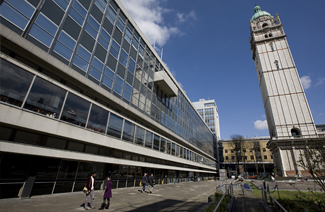今天小编为广大
In the fourteenth century, a number of politicaldevelopments cut Europe's overland trade routes to southern and eastern Asia, with which Europe had had important and highly profitable commercial ties since the twelfth century. This development, coming as it did when the bottom had fallen out of the European economy, provided an impetus to a long-held desire to secure direct relations with the East by establishing a sea trade. Widely reported, if somewhat distrusted, accounts by figures like the famous traveler from Venice, Marco Polo, of the willingness of people in China to trade with Europeans and of the immensity of the wealth to be gained by such contact made the idea irresistible. Possibilities for trade seemed promising, but no hope existed for maintaining the traditional routes over land. A new way had to be found.
The chief problem was technological: How were the Europeans to reach the East? Europe's maritime tradition had developed in the context of easily navigable seas—the Mediterranean, the Baltic, and, to a lesser extent, the North Sea between England and the Continent—not of vast oceans. New types of ships were needed, new methods of finding one's way, new techniques for financing so vast a scheme. The sheer scale of the investment it took to begin commercialexpansion at sea reflects the immensity of the profits that such East-West trade could create. Spices were the most sought-after commodities. Spices not only dramaticallyimproved the taste of the European diet but also were used to manufacture perfumes and certain medicines. But evenhigh-priced commodities like spices had to be transported in large bulk in order to justify the expense and trouble of sailing around the African continent all the way to India and China.
The principal seagoing ship used throughout the Middle Ages was the galley, a long, low ship fitted with sails but driven primarily by oars. The largest galleys had as many as 50 oarsmen. Since they had relatively shallow hulls, they were unstable when driven by sail or when on rough water: hence they were unsuitable for the voyage to the East. Even if they hugged the African coastline, they had little chance of surviving a crossing of the Indian Ocean. Shortly after 1400, shipbuilders began developing a new type of vessel properly designed to operate in rough, open water: the caravel. It had a wider and deeper hull than the galley and hence could carry more cargo: increased stability made it possible to add multiple masts and sails. In the largest caravels, two main masts held large square sails that provided the bulk of the thrust driving the ship forward, while a smaller forwardmast held a triangular-shaped sail, called a lateen sail, which could be moved into a variety of positions to maneuver the ship.
The astrolabe had long been the primary instrument for navigation, having been introduced in the eleventh century. It operated by measuring the height of the Sun and the fixed stars: by calculating the angles created by these points, it determined the degree of latitude at which one stood (The problem of determining longitude, though, was not solved until the eighteenth century.) By the early thirteenth century,Western Europeans had also developed and put into use the magnetic compass, which helped when clouds obliterated both the Sun and the stars. Also beginning in the thirteenth century, there were new maps refined by precisecalculations and the reports of sailors that made it possible to trace one's path with reasonable accuracy. Certain institutional and practical norms had become established as well. A maritime code known as the Consulate of the Sea, which originated in the western Mediterranean region in the fourteenth century, won acceptance by a majority of sea goers as the normative code for maritime conduct; it defined such matters as the authority of a ship's officers, protocols of command, pay structures, the rights of sailors, and the rules of engagement when ships met one another on the sea-lanes. Thus by about 1400 the key elements were in place to enable Europe to begin its seaward adventure.
以上就是小编为大家带来的托福阅读17:Europe's Early Sea Trade with Asia,一文希望各位托福备考小伙伴们能够喜欢哦!更多精彩内容尽在,预祝广大托福考生都能取得理想成绩!

















